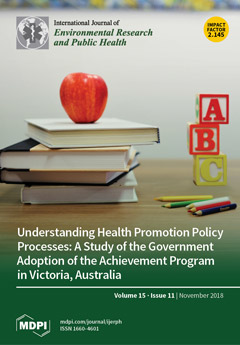Ambient air pollution in terms of fine and coarse particulate matter (PM
2.5 and PM
10) has been shown to increase adult and infant mortalities. Most studies have estimated the risk of mortalities through attributable proportions and number of excess cases with no reference to the time lost due to premature mortalities. Disability adjusted life years (DALYs) are necessary to measure the health impact of Ambient particulate matter (PM) over time. In this study, we used life-tables for three years (2014–2016) to estimate the years of life lost (YLL), a main component of DALYs, for adult mortalities (age 30+ years) and postneonatal infant mortalities (age 28+ days–1 year) associated with PM
2.5 exposure and PM
10 exposure, respectively. The annual average of PM
2.5 and PM
10 concentrations were recorded as 87.9 μg/m
3 and 167.5 μg/m
3, which are 8 times greater than the World Health Organization (WHO) air quality guidelines of 10 μg/m
3 and 20 μg/m
3, respectively. Results indicated a total of 252.18 (95% CI: 170.69–322.92) YLL for all ages with an increase of 27,474.61 (95% CI: 18,483.02–35,370.58) YLL over 10 years. The expected life remaining (ELR) calculations showed that 30- and 65-year-old persons would gain 2.34 years and 1.93 years, respectively if the current PM
2.5 exposure levels were reduced to the WHO interim targets (IT-1 = 35 μg/m
3). Newborns and 1-year old children may live 79.81 and 78.94 years, respectively with an increase in average life expectancy of 2.65 years if the WHO PM
10 interim targets were met (IT-1 = 70 μg/m
3). Sensitivity analyses for YLL were carried out for the years 2015, 2025, and 2045 and showed that the years of life would increase significantly for age groups between 30 and 85. Life expectancy, especially for the elderly (≥60 years), would increase at higher rates if PM
2.5 levels were reduced further. This study can be helpful for the assessment of poor air quality represented by PM
2.5 and PM
10 exposures in causing premature adult mortalities and postneonatal infant mortalities in developing countries with high ambient air pollution. Information in this article adds insights to the sustainable development goals (SDG 3.9.1 and 11.6.2) related to the reduction of mortality rates attributed to ambient air levels of coarse and fine particulate matter.
Full article





